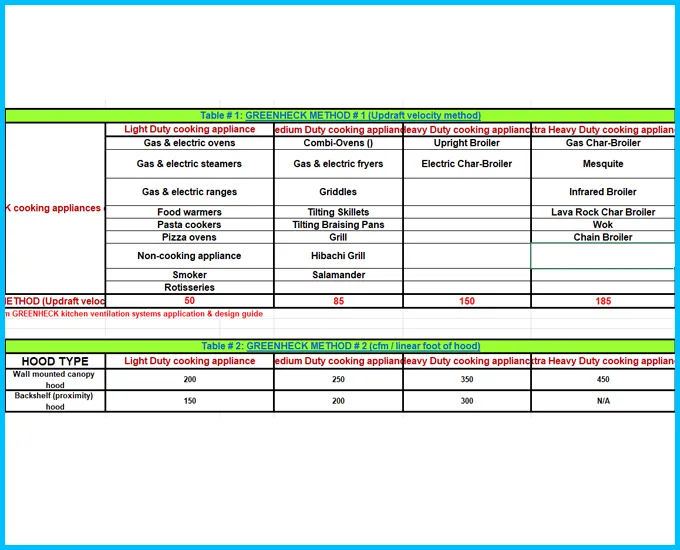
Ventilation is the single most important factor in the design, construction and operation of commercial kitchens. Without adequate ventilation and an ample supply of clean makeup air, no kitchen will operate efficiently. There are particular objectives which the ventilation has to achieve. The objectives include the following: 1) The general ventilation through the kitchen has to introduce sufficient clean, cool air and remove excess hot air for the occupants to breathe adequately and remain comfortable. 2) The general ventilation has to provide sufficient air for complete combustion at burning appliances, otherwise chronic debilitating carbon monoxide poisoning could occur. 3) The general and local ventilation has to dilute and remove products of combustion from gas and oil fired appliances. 4) The general and local ventilation has to dilute and remove odors, vapors and steam from the cooking processes. 5) Local ventilation has to protect against particular hazards to health arising from some cooking fumes, such as those involving direct application of heat to the food. 6) The local ventilation has to be capable of being kept clean from fat residues to avoid loss of efficiency and fire risks. 7) The system has to be quiet and vibration free. The amount of ventilation required in a particular cooking area depends on various factors: the type of product(s) being cooked, the structure which houses the cooking area, the type of equipment used and local code regulations. And, depending on your location, the building heat source may also play a factor. This course will provide basic guidelines to achieve these objectives and facilitate ventilation design. Let’s first understand key terminology and definitions related to kitchen ventilation systems.
Capture and containment (C & C) is the hood's ability to catch the contaminated airflow and hold it inside the hood until it can be pulled through the filters to outside. Capture velocity is the air velocity at the point of contaminant generation upstream of hood.
Minimum capture velocity is the air velocity in feet per minute (fpm) required to contain & capture contaminants (smoke, grease vapours, steam or heat)
Minimum transport velocity is the velocity required to transport particles without settling.
A well designed kitchen should have approximately equal amounts of air entering the system as leaving it. If this rule is not followed, C & C will suffer and there may be a noticeable amount of contaminated air spilling out of the hood, which will cause odour, excessive heat, and a greasy film on the walls and ceiling of the kitchen.
It is not recommended to use diffusers near the hood, and 3-way and 4-way diffusers should not be used in the kitchen.
Non-directional perforated diffusers with low throw are recommended for use with ceiling diffusers to keep air flow even and at a low velocity (maximum air velocity at the hood edge capture area should not exceed 50 fpm) in order to get proper hood performance.
Char-Broiler: An open grill with gas heated briquettes or electric strip heaters. Temperature rating 6000F.
Clearance to Combustible: The air space required between any hood surface and adjacent surface (walls, ceilings, etc) See NFPA 96, IMC, and local codes for air space requirements.
Fryer: Kettles mounted in a floor or bench mounted unit heated by gas or electricity. Food is cooked by being immersed in a kettle full of heated oil. Temperature rating 4000F.
Griddle: A unit with a thick, flat steel plate heated by gas or electricity for cooking by dry heat. Temperature rating 4000F.
Oven: A chamber used for baking, heating or drying foods. Temperature rating 4000F.
Overhang: The areas of the hood that project beyond the cooking equipment, measured from the internal perimeter of the hood.
Payback period: The time for the annual savings to equal the initial cost of an investment.
Spilling: The act of the contaminated air escaping from kitchen hood.
Surges: Large quantities of contaminated air generated by abnormal conditions.
Thermal Updraft: The upward movement of air due to a change in density (Temperature drives density changes)